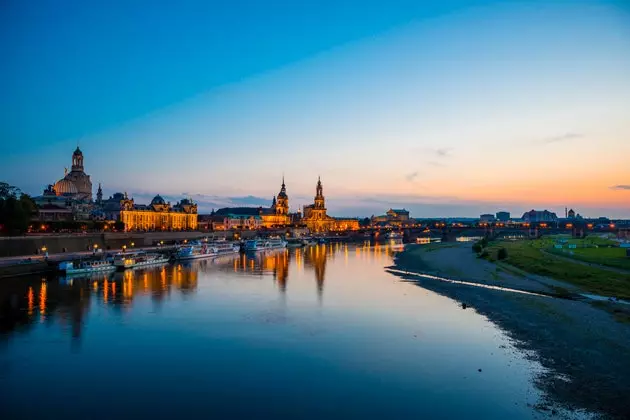
A quick, fair and necessary trip
If there is one good thing about this eastern German city, it is that you hardly have to walk to find its great monuments in the old town ( Altstadt ), where the ** Semperoper , the State Opera of the city**, is located, which together with the Theaterplatz an impressive architectural ensemble. Part of that open space is shared with Zwinger, a fortress that looks like a delicate castle rather than a martial building. Of such extensive dimensions that it houses an art gallery, a collection of porcelain, an animal museum, a gun room and a math room. To relax the intellect, it is best to sit in the park overlooking the River Elbe from the Brülhsche Terrase.
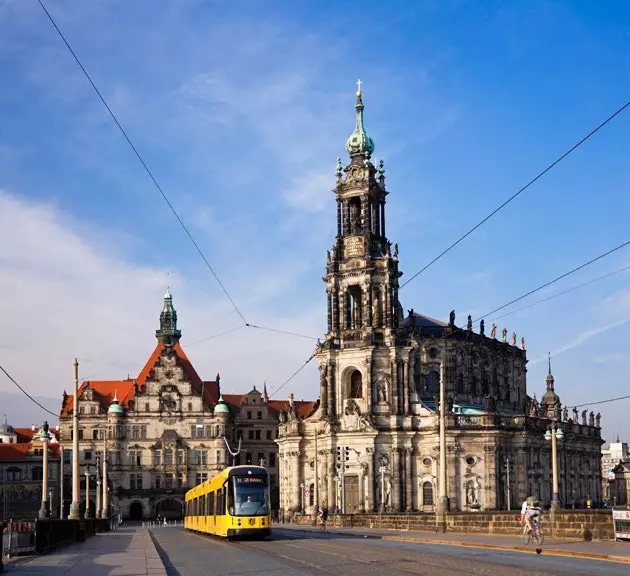
Residenzschloss, the city palace
Between so many castles, one can afford the sleep with the window glued to one of them without being excessive. Dresden is a city with fairly standard prices for accommodation, so other cheaper options, such as the typical Ibis somewhat far from the center, hardly make a difference in cost. The swisshotel is nose to nose with him Residenzschloss , known as the dresden palace and one of the oldest buildings in the city. Despite competing for attention with such a jewel of the Baroque and Romanesque , the hotel is state of the art on the inside and is famous among its guests for a pillow menu that restores faith in mankind - it seems that cocktails are not enough anymore -. It also takes advantage of its location in the historic center for its spa, located in a baroque chapel of the XV century and that it is one of the favorites of the locals, since it can be accessed without staying at the hotel to enjoy a wide range of massages, even more complete than the one with pillows.
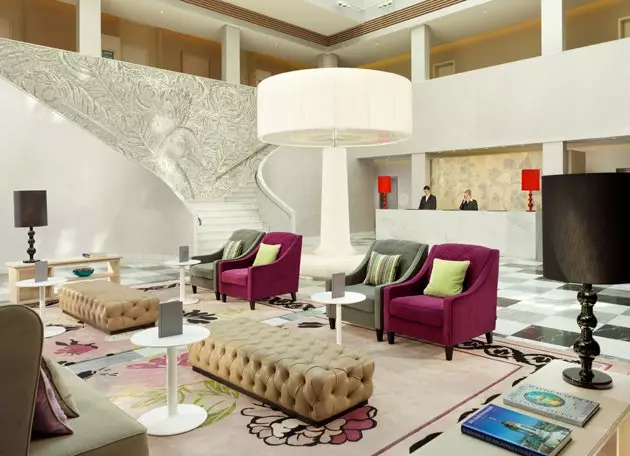
Swissotel's impressive lobby
very close, in the augustusstrasse , is found the Furstenzueg , a porcelain mural illustrating some of the ancient rulers of Saxony. Streetart of the good. the lutheran church Frauenkirche (the women's church) reigns over Neumarkt square with its spectacular anatomy and draws visitors around it. The 19th century cafe Located in front of its main door, it houses an exhibition of pianos on its upper floor with copies worth between 5,000 and 20,000 euros.
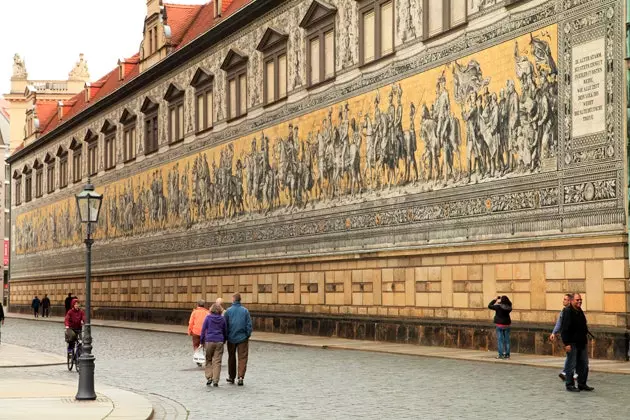
Furstenzueg, this is street art
And the Altmarkt, despite meaning old market, it is full of modern buildings with markets and shopping centers inside. From the center of the square and wherever you look from, you can appreciate the imposing architecture of the German city. Just as paradoxical is the name of the nearby **Cafe Prag**. Because it is neither coffee nor has anything to do with the Czech capital. is actually a modern market which for a little over two years has been bringing together on two floors all kinds of restaurants and establishments where you can get the best vegetables, ice cream, pasta, cheese and local bread . In a previous life, in the fifties, it was a variety theater where the city's artists liked to spend their time.
For lunch, one of the local dishes to try is Saxon-style potato soup, much better than the lion eats shrimp from Masterchef . Forced to try the typical Eierscheke (egg tart) . It is a true delight that not even a diet should keep us away from it. Why is it not world famous? You can try it in the Wohnstube restaurant. With a relaxed and familiar atmosphere, it offers a good brunch On weekends and the rest of the time, you can explore dishes on the menu made mostly from local products. To banish topics about German gastronomy, almost half of its offer is enclosed under the heading of " vitality ”, that is, healthy recipes in which calories are not abused. To feed even more its hedonistic atmosphere , on the last Tuesday of each month they organize a movie night in their lounge, accompanied by drinks and tapas.
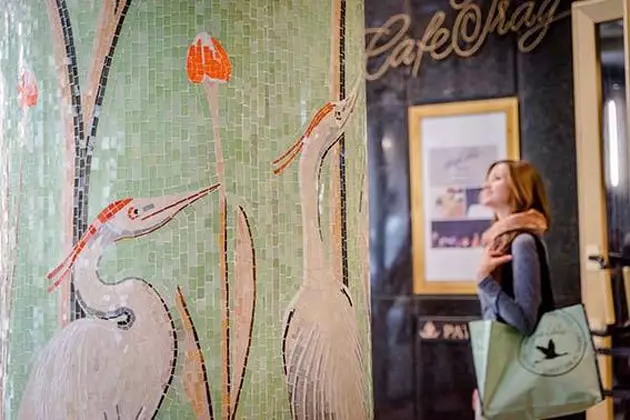
It is neither a cafe nor is it in Prague
NEUSTADT, BETWEEN CLASSICISM AND THE MODERN
You only have to cross a bridge to reach the **Neustadt (New Town)**. If possible the Augustusbrucke, for being the closest, oldest and the one with the best views. We continue to play the clue with the names because it is actually the oldest part of Dresden. A huge fire that destroyed almost the entire district in the 16th century is responsible for this new contradiction. The bombing during World War II l forced once again to change the face of Neustadt. Even with everything it could pass through the old town of more than one city. Getting to know the area may well take up a whole morning as you stroll through its art galleries **(including those of Sybille Nütt and Ines Schulz) ** and its antiques salons, such as the one in Jose Manuel Ladron de Guevara , which occupies the old town of Therese Malten , opera singer and lover of kings in the 19th century.
You can make a technical stop for a drink in the restaurant and the quiet garden of the ** Societäts Theater ,** overlooking the Dreikönigskirche church . From that patio, walking to the south you can find countless commercial passages that lead to the main street, Hauptstrasse , full of craft shops of all kinds, including graphic arts and erotic sculpture. At the end of this pedestrian boulevard is one of the symbols of the city. The Goldener Reiter (Golden Rider) is a statue of Agusto I El Fuerte on horseback.
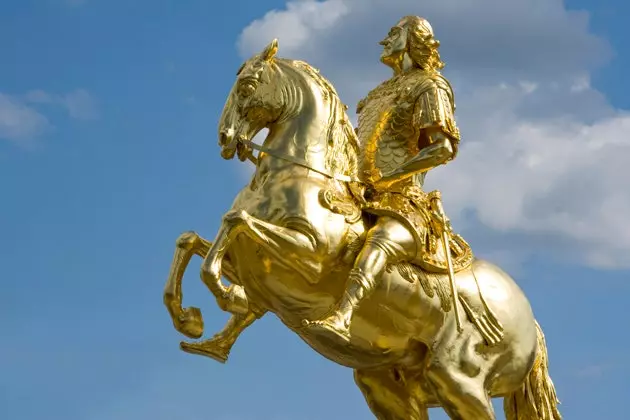
Augustus I the Strong
In Äussere Neustadt the outer part of the district, is where the bohemian of the city is housed. It's a much more modern and eclectic place where the bar and café culture is very much ingrained. A walk through the Gorlitzer Strasse can give a good account of it. The kind of culture that is carried here, like that of the Kunsthof-Passage (again more design-focused interior courtyards and modern coffee and tea rooms) or the Kunsthaus Raskolnikoff café, which refers to the protagonist of Crime and Punishment of Dostoevsky. A nerdy fact: Schiller wrote his ode to joy in this city, that song by Miguel Ríos that is also the anthem of Europe.
Follow @HLMartinez2010
*** You may also be interested in...**
- 48 hours in Barcelona
- 48 hours in Dubai
- 48 hours in Edinburgh
- 48 hours in Turin
- 48 hours in Porto
- 48 hours in Palermo
- 48 hours in Lisbon
- Crazy about stones: destinations for architecture lovers
- Museums to not lose sight of
- Cities of graffiti and street art (beyond Banksy)
- Thirteen excuses to escape from the center of Berlin
- Old Berlin
- Berlin Guide
- Plans to spend the summer in Berlin
- Things you didn't know about the Berlin Wall
- All articles of Hector Llanos
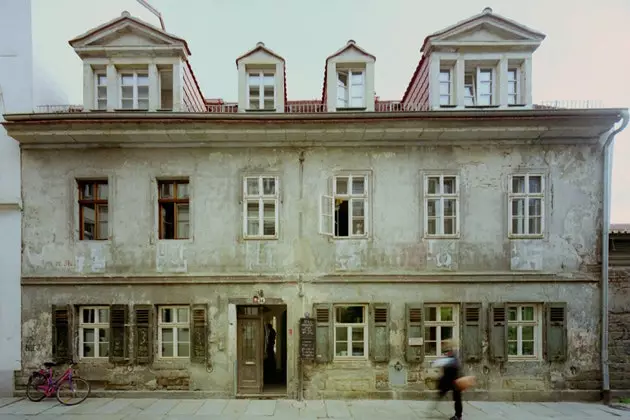
A reference to 'Crime and Punishment'
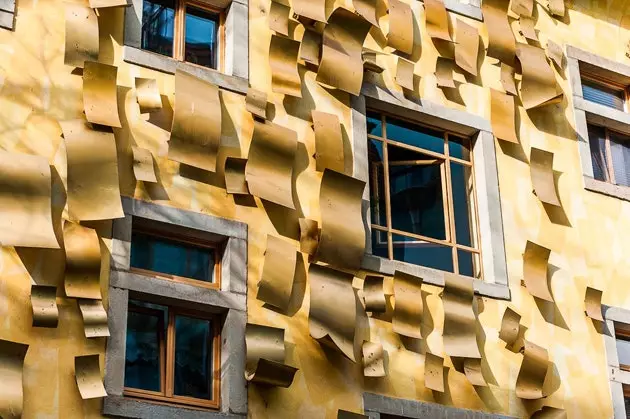
Inner courtyards that hide treasures
